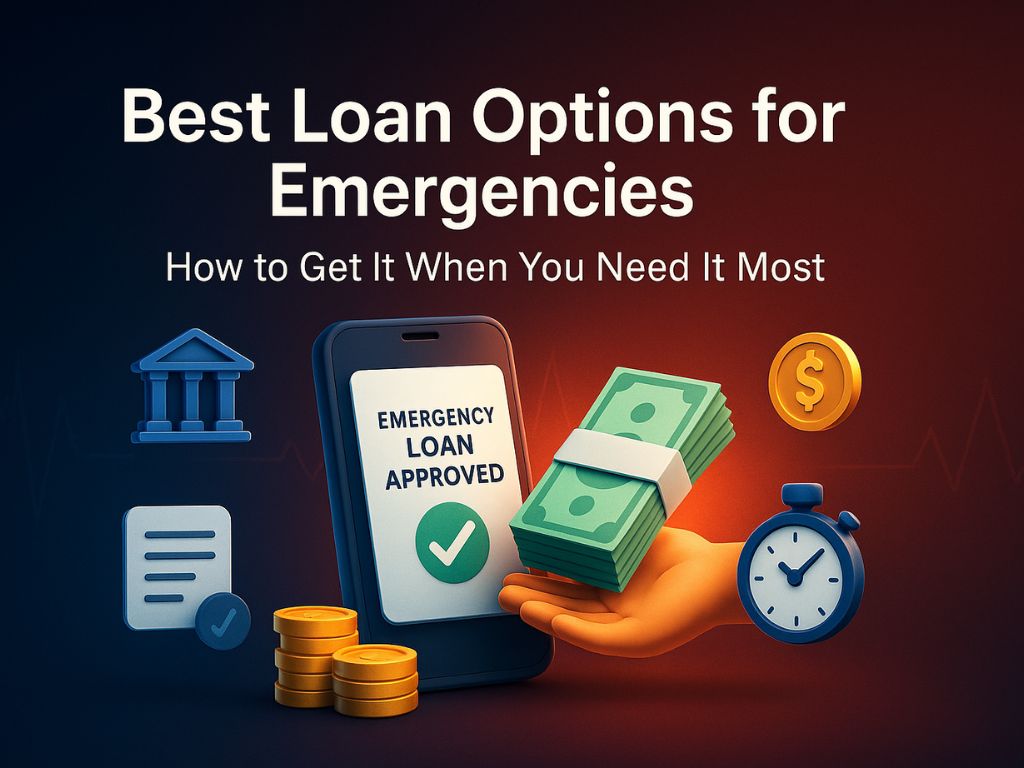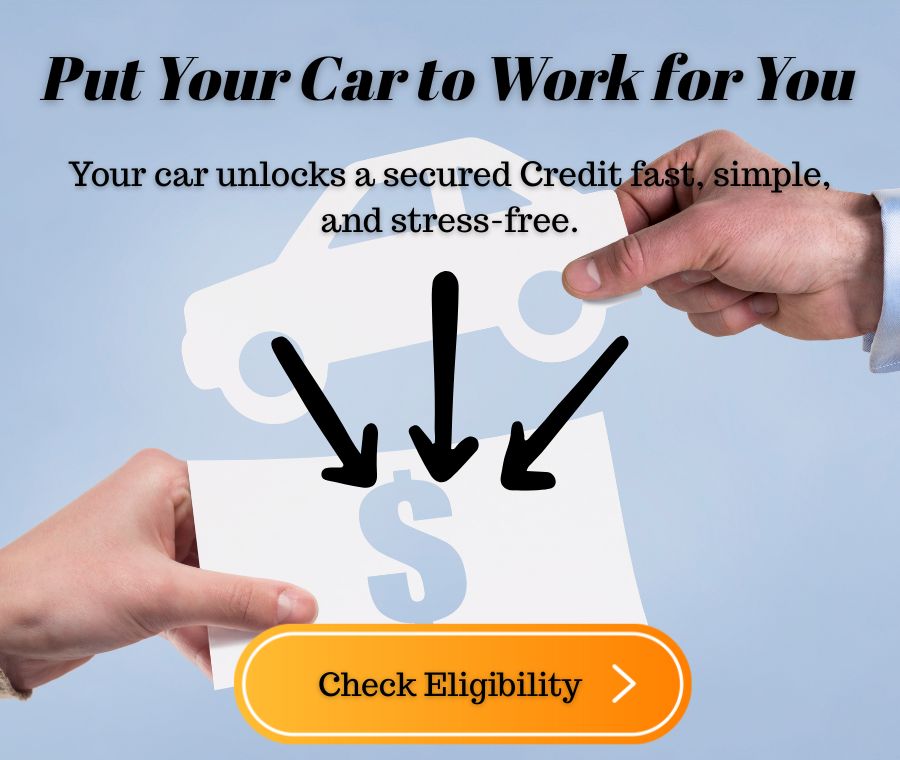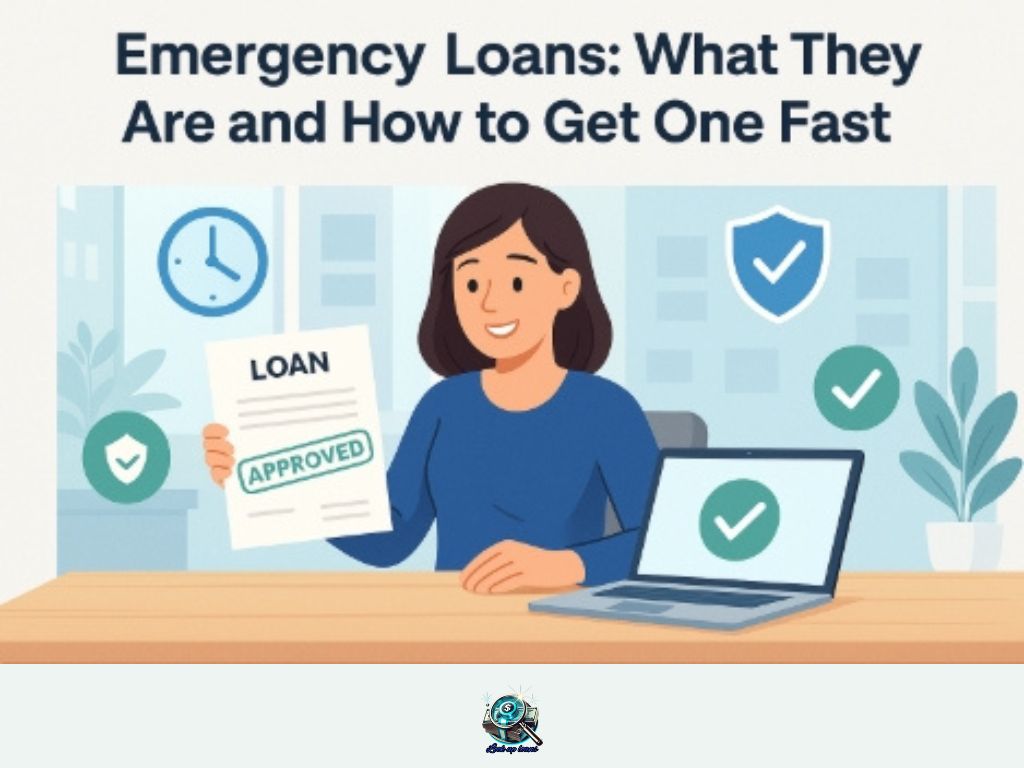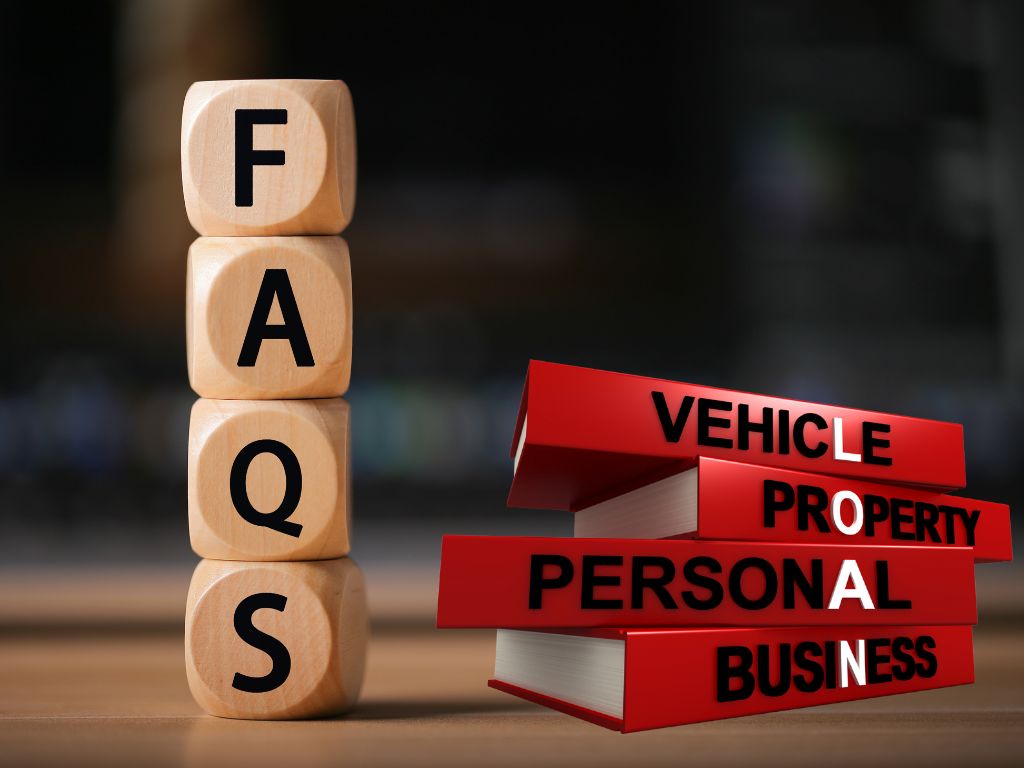When an emergency hits a sudden medical bill, a car repair, or rent due before payday, finding money fast becomes the priority. But speed often comes with risk. The pressure to act can make it easy to click “apply now” on the first offer that promises instant approval, only to end up with sky-high interest and unmanageable payments.
The good news: safe, legitimate ways to borrow do exist, even when time is short. Banks, credit unions, and newer online lenders now offer faster approval and fairer terms than ever before. The challenge is knowing which options protect you and which to avoid.
This guide breaks down the fastest and safest ways to get emergency funding, how to avoid predatory traps, and how to make sure today’s quick fix doesn’t become tomorrow’s debt problem.
Key Takeaways
- You have options: several lenders and programs offer fast funding without the risks of payday or title loans.
- Speed and safety can coexist: the fastest safe routes include credit union PALs, employer-based advances, and small personal loans from reputable lenders.
- Compare before committing: even under stress, checking two or three offers can cut borrowing costs dramatically.
- Avoid “guaranteed approval” lenders: real lenders verify income and identity scams don’t.
- Borrow for the emergency, not beyond it: keep your loan amount tied to the actual need, and plan repayment from day one.
Disclaimer: This site contains affiliate links. If you make a purchase, we may earn a commission at no extra cost to you.

Smart Funding Options When You Need Cash Fast
When you’re facing an urgent expense, the goal isn’t just to get approved, it’s to get approved safely. The best emergency funding options balance speed, affordability, and accountability. These choices give you quick access to cash without the long-term damage that comes with predatory lending.
Here are the most reliable ways to secure emergency funds when time is tight.
1. Personal Loans from Banks and Online Lenders
Many major banks and reputable online lenders now process personal loans within a few business days sometimes even 24 hours for existing customers. These loans let you borrow a lump sum and repay it in fixed monthly installments.
Why it helps: Predictable payments and clear terms make it easier to manage than a payday loan or cash advance.
Consider: Approval depends on income and credit, and rates vary widely. Use prequalification tools to see your potential rate without hurting your score.
2. Credit Union Payday Alternative Loans (PALs)
If you’re a credit-union member, this is one of the safest short-term borrowing options available. PALs are federally regulated and capped at a maximum 28 % APR, a fraction of what payday lenders charge.
Why it helps: Fast approval (often same-day) and transparent terms. Many credit unions offer these even if your credit isn’t perfect.
Consider: Membership is required, but joining is usually simple often through a small donation or community tie.
3. Employer or Payroll Advance Programs
Some employers and HR platforms offer paycheck-advance programs or earned-wage access tools that let you tap a portion of your next paycheck early.
Why it helps: No credit check, no interest, just access to your own earned income.
Consider: Availability depends on your workplace. Always confirm there are no hidden processing fees.
4. Secured Personal or Savings-Backed Loans
If you have a savings account, CD, or vehicle you can pledge, a secured personal loan can offer quick approval and lower rates than unsecured credit. The asset guarantees repayment, giving lenders confidence even if your credit is weak.
Why it helps: Higher approval odds and lower cost, especially for borrowers with fair or poor credit.
Consider: Missed payments can lead to losing the collateral. Borrow conservatively and prioritize essential needs.
5. Community and Nonprofit Assistance
Local organizations, charities, and government relief programs often provide small emergency grants or interest-free loans for rent, utilities, or medical costs.
Why it helps: No interest, no credit check, and immediate relief for essential expenses.
Consider: Funds may be limited or income-restricted, so apply early and bring documentation of need.

📊 Safe and Fast Emergency Loan Options (2025)
When emergencies strike, speed matters but so does safety. Here’s a quick look at options that provide fast funding without exposing you to predatory terms:
| Option | Best For | Typical Funding Speed | Interest Range | Key Risk |
|---|---|---|---|---|
| Personal Loan (Bank / Online) | Borrowers with stable income | 1–5 days | 8% – 24% APR | Higher cost with bad credit |
| Credit Union PAL | Members needing short-term cash | Same day – 2 days | ≤ 28% APR (cap) | Limited loan amounts |
| Employer Advance | Employees with urgent expenses | Same day | Often $0 interest | Employer participation required |
| Secured Loan | Borrowers with collateral | 1–3 days after verification | 6% – 15% APR | Asset loss if unpaid |
| Community Aid | Low-income or hardship cases | 1–7 days | Usually 0% – 5% | Limited availability |
These options balance accessibility and safety always confirm licensing, verify fees, and avoid any lender that promises “instant approval” for a fee.

What to Avoid When You’re Under Pressure
Emergencies make even the most careful borrowers vulnerable. When you need money fast, it’s easy to overlook the fine print and that’s exactly when risky lenders step in. Knowing what to avoid is just as important as knowing where to apply.
Below are the most common high-risk lending traps, what they look like, and what you can do instead.
1. Payday Loans
Payday lenders advertise “cash in minutes,” but their APRs often exceed 300 %. Many borrowers end up paying back far more than they borrowed and still owe money weeks later.
Better alternative: Ask your credit union about a Payday Alternative Loan (PAL). You’ll get similar speed without predatory interest rates.
2. Title Loans
These loans use your vehicle as collateral and can quickly spiral out of control. If you miss even one payment, your car can be repossessed sometimes after paying mostly interest.
Better alternative: A small personal loan from your bank or online lender. Even with a higher APR, you keep your vehicle and gain predictable payments.
3. Cash Advance Apps with Hidden Fees
Some “no-interest” cash advance apps make money through tips, subscriptions, or instant-transfer fees. These small costs add up effectively mimicking payday loan APRs without the same disclosure.
Better alternative: Use employer-based earned wage access programs (EWAs) or a low-interest credit union loan instead.
4. “Guaranteed Approval” or “No Credit Check” Lenders
Any lender promising approval without verifying your income or credit history should raise an instant red flag. Scammers often request upfront payments or access to your bank account.
Better alternative: Stick to verified lenders listed by the CFPB or NCUA. Real lenders always perform identity and income verification before approving funds.
5. Overborrowing Out of Fear
When panic hits, borrowing “a little extra just in case” can push repayment out of reach. The result: more interest, more stress, and a higher chance of default.
Better approach: Borrow only for the emergency not beyond it. Create a quick repayment plan before signing any agreement.

📊 High-Risk Emergency Loan Traps and What to Do Instead
Not all “quick cash” options are safe. Below are the most common emergency loan traps — and smarter alternatives that protect your credit and finances.
| Risky Option | Why It’s Dangerous | Better Move Instead |
|---|---|---|
| Payday Loans | Triple-digit APRs and rollover fees trap borrowers in cycles of debt | Ask for a Credit Union PAL (capped at 28%) |
| Title Loans | Risk losing your vehicle after one missed payment | Consider a small secured personal loan |
| Cash Advance Apps | Hidden “tips” or transfer fees mimic high APRs | Look for employer-based paycheck access |
| “Guaranteed” Loans | Often scams or unlicensed lenders | Verify licensing via CFPB’s lender database |
| Borrowing Too Much | Raises repayment risk and stress | Borrow only for the actual emergency |
💡 Tip: A legitimate lender will never rush you into signing, skip disclosures, or charge upfront “approval” fees. Always check licenses and read the full loan agreement before accepting funds.

How to Get Approved Quickly (Without Overpaying)
In an emergency, time matters but so does cost. Acting fast shouldn’t mean accepting the first offer you see. You can often get approved just as quickly while still protecting your wallet and your credit if you know what to prepare in advance.
Follow these steps to move efficiently from application to funding, without falling into overpayment traps.
1. Gather Documents Before You Apply
Most delays happen because of missing paperwork. Having your information ready makes approval smoother especially for same-day or next-day funding.
What to prepare:
- Government-issued ID
- Recent pay stubs or proof of income
- Bank statements (to verify direct deposit)
- Employer contact or proof of employment
- For self-employed: tax returns or recent invoices
💡 Tip: Scan or photograph documents ahead of time online lenders and credit unions often accept secure digital uploads.
2. Use Prequalification to Compare Rates Safely
Prequalification tools use soft credit checks, meaning they won’t impact your score. You can see estimated rates, loan amounts, and terms from multiple lenders side by side all before you officially apply.
What to look for:
- Fixed APRs only (no “introductory” or variable rates)
- Transparent fee breakdown
- Clear funding timelines
💬 Example: You might prequalify with three lenders in under 10 minutes one at 20% APR, another at 28%, and a third at 35%. The lowest rate can save you hundreds in interest.
3. Prioritize Direct Deposit Lenders
Choose lenders offering direct deposit funding; it’s faster and safer than checks or third-party transfers.
Typical turnaround times (2025):
- Online lenders: 1–2 business days
- Credit unions: Same-day to 2 days
- Banks: 2–5 business days
Avoid lenders who require prepaid debit cards or ask for external payment apps; those are common scam indicators.
4. Keep Your Debt-to-Income (DTI) Under 40%
Even for emergency loans, most lenders still check whether you can reasonably afford repayment.
Formula: DTI=TotalMonthlyDebtPaymentsGrossMonthlyIncome×100DTI = \frac{Total Monthly Debt Payments}{Gross Monthly Income} \times 100DTI=GrossMonthlyIncomeTotalMonthlyDebtPayments×100
If your DTI is above 40–45%, consider applying with a smaller amount or adding a co-signer to strengthen your profile.
5. Borrow Only What You Can Repay Comfortably
The fastest approvals usually go to borrowers who request modest, realistic amounts not the maximum allowed.
Better approach: Estimate the exact cost of your emergency, round up slightly for fees, and stop there. Borrowing more than you can repay often leads to renewed debt cycles.
💡 Example: If your car repair costs $1,200, don’t apply for a $3,000 loan “just in case.” It only increases your repayment burden.

📋 Quick Reference: How to Speed Up Approval Without Paying Extra
Getting approved faster doesn’t mean paying more. Follow these proven steps to streamline the process while keeping costs low:
| Step | What It Does | Why It Matters |
|---|---|---|
| Prequalify Online | Compares rates safely | Avoids multiple hard inquiries |
| Prepare Documents | Eliminates back-and-forth delays | Cuts approval time by 1–2 days |
| Choose Direct Deposit | Gets funds faster | Reduces fraud or mail delays |
| Lower DTI | Improves eligibility | Increases approval odds |
| Borrow Conservatively | Keeps payments affordable | Prevents long-term debt strain |
💡 Tip: Lenders prioritize well-prepared borrowers. Submitting complete, accurate documentation during prequalification often speeds up approval by 1–3 business days.

Short-Term Relief vs. Long-Term Stability: Planning Beyond the Emergency
The hardest part of any financial emergency isn’t finding help; it’s rebuilding once the crisis passes. The right emergency loan should solve a problem, not start a new one.
That means balancing immediate relief with long-term stability, using a strategy that helps you regain control rather than rely on credit again next month.
Here’s how to make sure your recovery plan starts the moment the funds arrive.
1. Prioritize What the Money Covers
Emergency loans should only address urgent, non-discretionary needs: medical bills, rent, car repairs, or essential utilities.
Using them for wants or “catch-all” spending makes repayment harder and delays financial recovery.
Ask yourself before borrowing:
- Does this expense protect my health, housing, or income?
- Will this purchase still matter six months from now?
If the answer is no, pause and explore smaller or no-cost alternatives first.
2. Create a Quick Repayment Plan
A short-term loan only helps if you can clear it fast. Once your emergency stabilizes, make repayment a top priority ideally within a few months.
Steps to stay ahead:
- Set up automatic payments to avoid late fees.
- If possible, make biweekly payments, it reduces interest and clears your balance faster.
- Apply any windfalls (like tax refunds or bonuses) directly to the loan.
💡 Tip: The faster you repay, the more likely your credit score will rise making future borrowing cheaper if another emergency occurs.
3. Build a Small Emergency Fund Next
Once your balance is under control, shift your focus toward prevention.
Even a small emergency fund ($500–$1,000) can replace the need for short-term borrowing next time.
How to start:
- Set up automatic transfers even $25–$50 per paycheck builds quickly.
- Keep the fund in a separate savings account to avoid spending temptations.
- Use it only for true emergencies, not routine bills.
4. Revisit Your Credit and Spending Habits
After repaying your emergency loan, check your credit reports again.
Look for any lingering inaccuracies or outdated negative marks. Keeping your utilization low (under 30%) and paying on time steadily rebuilds trust with lenders.
Bonus move: Ask your lender if they report on-time payments to all three credit bureaus consistent reporting helps your score rebound faster.

📊 Turning Short-Term Borrowing Into Long-Term Financial Stability
Short-term loans can serve as stepping stones if managed strategically. Follow these key steps to turn temporary borrowing into lasting financial health:
| Step | Immediate Impact | Long-Term Benefit |
|---|---|---|
| Prioritize essential spending | Keeps funds focused on real emergencies | Prevents unnecessary debt |
| Create a repayment plan | Avoids missed payments and late fees | Improves credit history |
| Build an emergency fund | Reduces need for future borrowing | Strengthens financial safety net |
| Review credit reports | Catches reporting errors early | Increases future approval odds |
💡 Pro Tip: Treat every repayment as a credit-building opportunity. The same discipline that gets you out of short-term debt also builds the financial foundation for long-term stability.

Conclusion
Emergencies don’t wait, and neither should you but urgency doesn’t mean you have to accept unfair terms or risky lenders.
When cash is tight and time is short, the best move is to slow down just long enough to compare your options, verify legitimacy, and borrow only what truly solves the problem at hand.
A well-chosen emergency loan can do more than cover an expense; it can protect your stability, help rebuild credit, and even create momentum toward lasting financial security.
The goal isn’t just to get through a crisis, but to come out stronger, with fewer financial surprises next time.
So before you sign:
- Double-check the lender’s legitimacy.
- Know your repayment plan before funding.
- Treat this loan as a bridge, not a solution.
Emergencies may be unpredictable but smart borrowing is always within your control.
💬 Final Insight: The fastest loan isn’t always the best loan. The safest emergency plan combines speed, transparency, and repayment discipline the foundation for real financial resilience.

Frequently Asked Questions
1. What’s the fastest way to get a loan during a financial emergency?
Start with online lenders or credit unions that offer instant prequalification. Avoid lenders promising “guaranteed approval”, those often charge extreme rates or hidden fees.
2. How can I choose a safe emergency loan under pressure?
Pause long enough to compare at least two offers. Focus on APR, repayment term, and lender transparency. A legitimate lender never asks for payment upfront.
3. What if I can’t qualify for an emergency loan right now?
Check if your employer, credit union, or local nonprofits offer small emergency advances or assistance programs. These can bridge the gap without trapping you in high-cost debt.
4. Should I use my credit card for an emergency instead of a loan?
If you can repay within a month or two, a credit card or 0% balance transfer might cost less. For larger or longer-term needs, a personal loan with fixed payments is safer.
5. How can I avoid turning one emergency into long-term debt?
Borrow only what you need and repay it fast. Once the crisis passes, redirect the same payment amount into savings to rebuild an emergency fund.
6. Can I still get help if I have bad credit?
Yes. Credit unions, secured personal loans, or lenders offering income-based approvals may still qualify you. Even if rates are higher, a short-term loan with a clear payoff plan can help you avoid payday traps.
1 Comment
Personal Loans: Read This Before You Sign Anything - Look Up Loans · June 21, 2025 at 3:09 am
[…] If speed matters most, this guide to emergency loans breaks down what to expect and what to watch for. […]